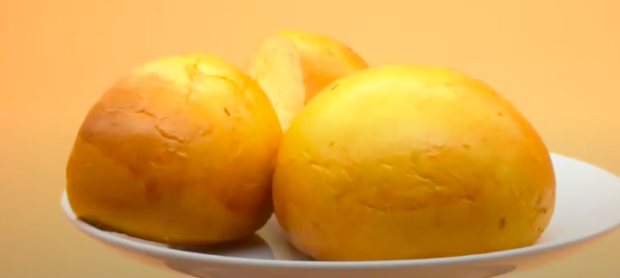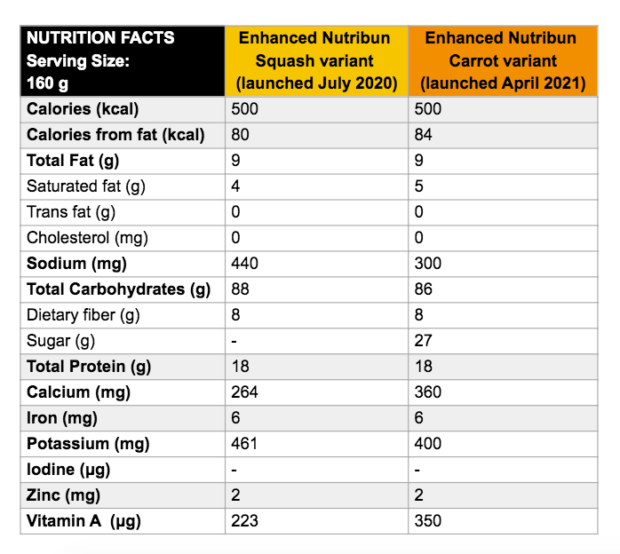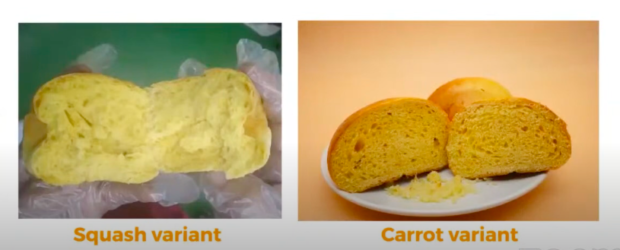DOST-FNRI bakes new ‘Enhanced Nutribuns’ with carrots
The Department of Science and Technology – Food and Nutrition Research Institute (DOST-FNRI) has launched last Wednesday another variant of its recently revived “Enhanced Nutribun” bread, this time made from carrots.
Same with last year’s Nutribun made with squash puree, the new Nutribun with carrots remain packed with nutrients needed by growing children.
According to the FNRI, a serving of Enhanced Nutribun with carrots at 160 grams provides 31 percent of energy (500 kilocalories), 59 percent of protein (18 g), 60 percent of iron (6 milligrams), and 90 percent of vitamin A (350 micrograms), based on the recommended energy and nutrient intake of the Philippine Dietary Reference Intake of a male child six to nine years old.
The new variant, however, has more vitamin A than the squash puree variant’s 223 micrograms, as carrot has more beta-carotene content than squash.
Vitamin A as retinol is needed by the body for good eyesight, growth, reproduction and stronger immunity.
The Enhanced Nutribun carrot variant is a round-shaped bun that is shiny, with light yellow with orange speckles. According to FNRI, the Nutribuns with carrots are “sweet, delicious and milky that is acceptable for all ages.”
Nutribuns contain natural fiber with no artificial flavor and color. When packed in polyethylene plastic, it can last up to five days at room temperature.
Nutribuns, partnered with milk products, are part of the national government’s supplementary feeding program for children during community quarantine.
Based on the FNRI’s Rapid Nutrition Assessment Survey conducted between November and December last year, only 11.9 percent of children aged 12 and below have participated in supplemental feeding programs — which was lower compared with the 21.6-percent participation of the targeted beneficiaries based on FNRI’s Expanded National Nutrition Survey.
According to the FNRI, they needed to look for another formulation using other agricultural products due to supply-demand issues by solely depending on squash for their Enhanced Nutribun.
“During the lean months when the supply of squash was low, its prices were so high. Our adopters could not supply the demand of our partner agencies for supplementary feeding,” DOST-FNRI director Dr. Imelda Angeles-Agdeppa said during the Enhanced Nutribun’s carrot variant virtual launch on Wednesday.
The carrot variant was also developed to prevent “pagkaumay” or “pagkasawa” with the squash variant of the Enhanced Nutribun, especially to children who are part of the supplemental feeding programs and may be picky on their food.
Engr. Charlie Adona, the project leader of the Enhanced Nutribun with carrot, said it took them nine months after developing the original squash variant to ensure that the two variants were almost similar.
“We want their nutrients and pricing as close as to each other. Just so in case a technology adopter chooses to produce the carrot variant, it would not be difficult for them. This will also benefit our consumers to look for an alternative,” he said.
Apart from Adona, the scientists behind the carrot variant of the Enhanced Nutribun from the DOST-FNRI were Richard Alcaraz, Jonahver Tarlit and Filoteo Ponte.
Since the launch of the Enhanced Nutribun in July last year, there are 79 licensed adoptors in the country. These are bakeries and companies that intend to manufacture the Enhanced Nutribun.
The increased demand for Enhanced Nutribun, however, also increased the demand for squash in the region.
Another problem they encountered was that outside the harvest season of squash, its supply would decrease, and consequently pull up its prices in the market.
Generally, squash is planted in October to December in the lowland areas and May to July in the highland areas. It will take 80 to 100 days, depending on the variety, for them to mature before they can be harvested.
Carrots, meanwhile, can be planted year-round in the highlands. In lowlands, they are best planted from the last week of October up to February. Some varieties of carrots mature in 70 days.
The DOST-FNRI is inviting adoptors of the first variant of Enhanced Nutribun, bakery companies and even bakeries in communities to also become adoptors of the Enhanced Nutribun with Carrots technology to make it more available to more consumers nationwide.
“We are encouraging our existing and prospective partners to support once again our Enhanced Nutribun with Carrots to easily deliver nutritious food for our children who cannot avail of our previous center-based supplementary feeding program,” Agdeppa said.
“I hope that we take this opportunity to help ease the impact of Covid-19 in the health and nutrition of our children and the Filipino people and general,” she added.


